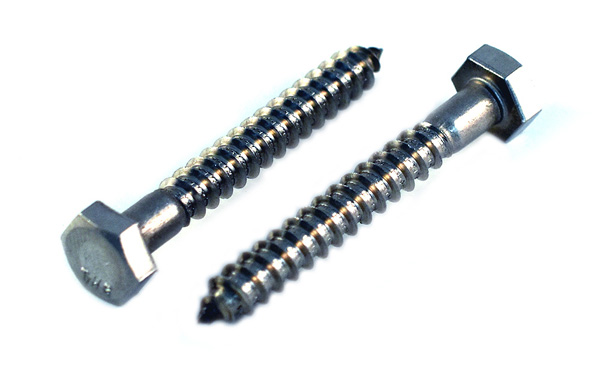
Every maritime or DIY enthusiast will have inevitably encountered and spent hours trying to remove a stripped screw. Stripped screws often call for a little out of the box thinking, but the result can be effective – especially if you want to remove the screw without damaging the item that it is screwed into.
At Marsh Fasteners, we compiled these 5 sure-fire ways to get that stubborn marine fastener out:
Use an Elastic Band
For smaller screws whose heads have become worn, sometimes all that you need is a little traction for the screwdriver to bite into. The rubbery surface on an elastic band placed on top of the screw head provides the traction that the screwdriver needs to twist and remove the screw. You can use any rubber band that you can find; however, if you are spoiled for choice, a thicker, broader rubber band usually works best. This is because it simply provides a bigger contact area between the driver bit and the head of the screw.
Cut a Slot into The Head
If you are trying to remove a Philips or star head screw, and the head has been stripped, you can quickly and effectively turn that screw into a flathead with a small hacksaw or a rotary attachment on a drill. Be careful not to cut into the material underneath the screw though. This method may only be effective if the screw has not been inserted too deeply into the item. If it is really deep, there is a good chance that the rotary attachment or hacksaw may cause damage to the surrounding surface material.
Use a Left-Handed Drill Bit
These specialized drill bits are designed to be used in reverse. Select a drill bit with a thinner body than that of the screw for the best results. In order to get it right, start by placing the left-handed drill bit into your drill and tightening as normal, then drill into the stripped screw. As soon as the bit bites, it will likely unscrew the problem fastener. It may require a few attempts, however. So, do not give up if it does not happen immediately.
Use the Drill
If you do not have a left-handed drill bit, the drill itself can be used. If the fastener is not completely screwed into the material, the head of the drill can be placed over the exposed part of the screw and tightened. The drill can then be activated in reverse to remove the fastener. Remember to gently and slowly remove the fastener out of the material – never try to pull it. Once again, as with many of the tricks above, persistence is key.
Use an Impact Driver
Choose the correct screwdriver bit for your stripped screw, load it into the impact driver and place it on the screw head. Then hit the back of the driver with a hammer a few times. The impact driver will bite into the fastener and turn, loosen it until it is able to be removed with more traditional tools. Be extremely cautious as too much impact applied to the head of the screw could lead to damage which, ultimately, could make the stripped screw even more difficult to remove.
Whether you are looking to learn how to remove a stripped screw from plastic, how to remove a small stripped screw, or how to remove a stripped screw from wood, all of the above tips and guidelines should work to your advantage. Throw in a bit of patience and perseverance, and the screw should be out of the item faster than you expected.
How to Prevent a Screw from Stripping in the First Place
Nobody enjoys having to deal with a stripped screw. So, it is obviously good news to discover that there are various precautions that can be taken in order to prevent the screw from stripping in the first place.
The most important precaution is to always ensure that you utilize the correct driver for the screw – this goes for both the correct shape and the correct size. Finally, it is essential that you take your time when driving the screw, making doubly sure that it is correctly seated before trying to spin.




